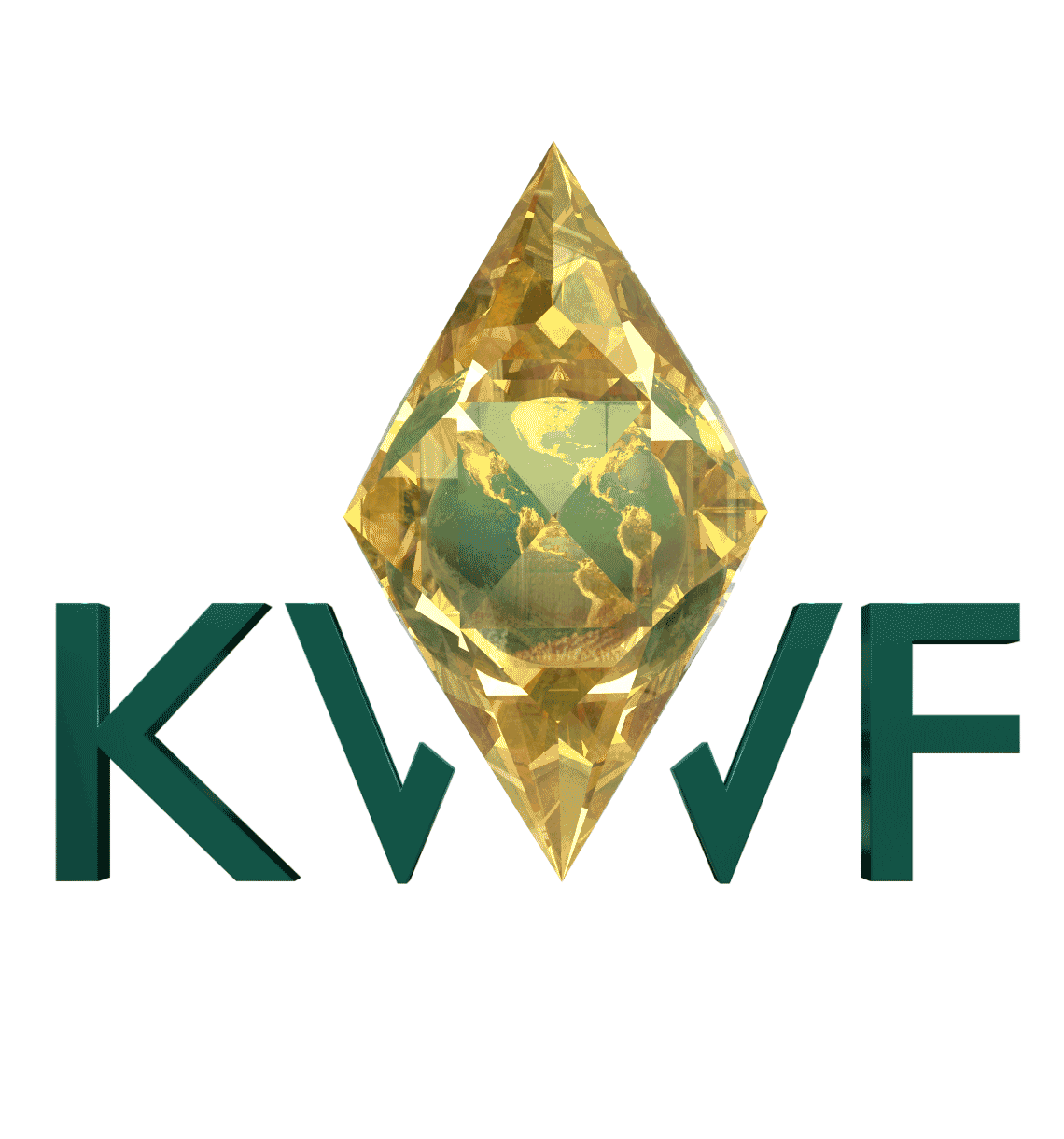Sri Lankan Star Tortoise: Smuggling for the Exotic Pet Market
- Kashmir World Foundation

- Oct 27, 2022
- 6 min read
Written by: Dillon Jones, Wildlife Researcher for KwF
Edited by: Yunling Ying
Oct 26, 2022
In recent years, the Sri Lankan, or Indian Star Tortoise (Geochelone elegans ) has been smuggled out of its native habitat due to high price value outside of the country. While not currently endangered, the tortoise is nearing endangered status due to its highly valued coloration, medicinal, and cultural values, as well as for the exotic pet trade. [1] The tortoises are protected in India, Sri Lanka, and Pakistan and are illegal to trade and possess. They are highly valued in areas outside of these countries, leading some to risk the law for profit. Conservation of these species is imperative to its survival.

The Star Tortoise is not currently endangered, however, due to excessive trade, it is at risk of becoming so.
The Sri Lankan tortoise is medium-sized, reaching up to 15 inches. The stark yellow lines that categorize the species increases their value. They live, on average, 40-80 years in the wild, and eat a diet of mainly grasses; they have also been known to feed on insects and carrion. [2] Their native habitat spans large areas of India, Sri Lanka, and southeastern Pakistan. [3] Female star tortoises reach reproductive maturity at 7 years, and lay up to 9 clutches (groups) of eggs per year. Each clutch contains between 1 and 10 eggs.[4] Tortoises don't have many natural predators in the wild, as their hard shell and thick skin protects them quite well. Humans are their main predatory force.
Sri Lankan tortoises are enveloped in superstition. Chinese culture believes they bring good luck if kept in the home, and use them as an ingredient in medicine. [6] The main driving factor for poaching, however, is the pet trade. Their pattern and coloring makes them highly desirable in the United States, Europe, the Middle East, and many Southeastern Asian Countries for resale.[4] Many retailers claim that the tortoises are captive hatched, but with the high volume of exported tortoises, the claims of “captive-bred” are called into question.
In the reptile pet trade, turtles and tortoises can be classified under several different labels indicating their origin. Captive bred (CB) , where the parent tortoises were bred in captivity, captive hatched (CH), where wild eggs are harvested and then hatched in captivity, wild caught (WC), where the individual animal is caught directly from the wild, and long term captive (LTC), where tortoises are caught in the wild but live in captivity for many years. As a general rule captive bred animals are the healthiest, and least likely to harbor parasites, diseases, or underlying problems. They don't contribute to the unregulated trade and smuggling of reptiles from the wild. Long term captive and captive hatched individuals have similar health consistencies as captive bred, while “Wild caught turtles and tortoises often support heavy populations of parasites and various diseases.“[15] The issue is exacerbated where “many dealers are passing off wild caught turtles and tortoises as captive bred individuals, while others being imported from foreign countries are misleadingly labeled as captive bred when they were hatched from eggs removed from turtles butchered for food.“ [15]

Official doing a count on smuggled tortoises
Anywhere between 10-20,000 Star Tortoises are smuggled out of India every year.
The trail of tortoise smuggling starts with a local hunter, usually part of a local tribe. They catch the tortoises from the dry grass scrub land in which they reside. The hunters are paid $1 or less per tortoise by a middleman who, in turn, sells the tortoises to a smuggler[8][4]. Smugglers sneak them onto airplanes, or through sea routes with less security. The tortoises can survive for up to 15 days without food, allowing for high survival rates on these routes.[4] When reaching the desired country, smugglers can expect to sell the illegal tortoises for over $150 each. The retailers, however, can expect to get up to $1000 per tortoise. [4] This high price demands a conservative estimate of between 10-20,000 tortoises exported from their countries of origin per year[5], however, only 3,000 on average are collected by officials. [4]
Indian Star tortoises are underneath CITES appendix II, which states that the species is currently not threatened with extinction, but are likely to be if trade is not regulated. This CITES listing helps to stop international trade but much of the responsibility falls upon the local government. [8] In India, the tortoises are considered Schedule IV, the lowest rank of protection under the Wildlife Protection Act. If caught, a smuggler can be penalized with a maximum of three years in prison or a Rs.25,000 ($400 USD) fine [9]. This sum is low compared to the market value of the tortoises, acting as a poor deterrent for many smugglers. In 2008, a man in Thailand was arrested for smuggling 778 Indian Star Tortoises into the country. In 2010, he was again arrested for smuggling in 1,140 live tortoises and a Gavial Crocodile, for which he was released once he posted bail of only $3,300. A fraction compared to the amount he could have made if he had sold the tortoises to a dealer. The tortoises were allegedly on their way to the Chatuchak Market, one of the biggest hubs for illegally smuggled tortoises in the world [10]
However, not all smugglers have the same luck. In July of 2011, 196 tortoises were seized at Ivato International Airport in Antananarivo, Madagascar from 2 passengers. The group included 168 radiated tortoises, 27 plowshare tortoises, and 1 spider tortoise. The final destination would have been Indonesia, first passing through Nairobi and Dubai. The two men were arrested and the tortoises were sent to varying agencies to rehabilitate and release back into the wild. [11] In June of 2013 the Turtle Survival Alliance sentenced one of the smugglers to two years in jail and 3 accomplices were given fines that amounted to $574,000 USD. This marks the highest fine levied within Madagascar for the smuggling of tortoises and sets the framework for tighter restrictions on smugglers. [12]
In September of 2013, 952 Indian Star Tortoises were seized by the Indian Border patrol along the Indo-Bangladesh border, the largest number of star tortoises seized after being illegally smuggled out of the country. The smugglers were estimated to make Rs. 3.19 Crore or over $500,000 in USD.

The unregulated, over-harvesting of any animal endangers the species. The Galapagos Tortoises have only recently returned to a sustainable level after human overharvesting in the 1800s. Tighter regulations and better-implemented systems to stop poaching and illegal wildlife trafficking will help animals around the world, not just Indian Star Tortoises.
Bibliography
Indian Star Tortoise Geochelone elegans. (n.d.). Retrieved November 12, 2014, from http://www.arocha.org/int-en/work/species/g1/955-DSY.html
Fife, J. (n.d.). Indian Star Tortoise Care Sheet. Retrieved November 12, 2014. http://www.tortoisetrust.org/articles/elegans.html
Edqvist, U. (n.d.). Tortoise Trust Web - Star Tortoise Basics. Retrieved November 12, 2014.http://animaldiversity.ummz.umich.edu/accounts/Geochelone_elegans/#9092c57683d221843d98d524407e0879
Bouchard, K. 2009. "Geochelone elegans" (On-line), Animal Diversity Web. Accessed November 11, 2014 at http://animaldiversity.ummz.umich.edu/accounts/Geochelone_elegans/
Shepherd, C., Burgess, E., & Loo, M. (2004). Demand Driven: The Trade of Indian Star Tortoises Geochelone Elegans in Peninsular Malaysia. TRAFFIC Southeast Asia.
Descriptions and articles about the Star Tortoise (Geochelone elegans as classified by The Reptile Database) - Encyclopedia of Life. (n.d.). Retrieved November 12, 2014.
http://www.arocha.org/int-en/work/species/g1/955-DSY.html
"The CITES Appendices." CITES. The CITES Secretariat, n.d. Web. 11 Nov. 2014. <http://www.cites.org/eng/app/index.php>.
"Uncovering the Tortoise Trade Route." The Hindu. N.p., 2 June 2007. Web. 11 Nov. 2014. <http://www.thehindu.com/todays-paper/tp-opinion/uncovering-the-tortoise-trade-route/article1850672.ece>.
"TRAFFIC - Wildlife Trade News - Tortoises Smuggler Caught for Second Time In Bangkok." TRAFFIC - Wildlife Trade News - Tortoises Smuggler Caught for Second Time In Bangkok. N.p., 2 Oct. 2010. Web. 11 Nov. 2014. <http://www.traffic.org/home/2010/10/2/tortoises-smuggler-caught-for-second-time-in-bangkok.html>.
"Uncovering the Tortoise Trade Route." The Hindu. N.p., 2 June 2007. Web. 11 Nov. 2014. <http://www.thehindu.com/todays-paper/tp-opinion/uncovering-the-tortoise-trade-route/article1850672.ece>.
"TRAFFIC - Wildlife Trade News - Tortoises Smuggler Caught for Second Time In Bangkok." TRAFFIC - Wildlife Trade News - Tortoises Smuggler Caught for Second Time In Bangkok. N.p., 2 Oct. 2010. Web. 11 Nov. 2014. <http://www.traffic.org/home/2010/10/2/tortoises-smuggler-caught-for-second-time-in-bangkok.html>.
Lowe, Heather. "Turtle Survival Alliance." Tortoises Seized in Madagascar. N.p., 28 July 2011. Web. 11 Nov. 2014. <http://www.turtlesurvival.org/blog/1/149#.VGDWWPnF_tt>.
Lowe, Heather. "Turtle Survival Alliance." Madagascar Tortoise Smugglers Sentenced. N.p., 20 June 2013. Web. 11 Nov. 2014. <http://www.turtlesurvival.org/blog/1-blog/222-madagascar-tortoise-smugglers-sentenced#.VGDWB_nF_ts>.
"Big Seizure of 952 Star Tortoises worth Rs 3.19 Crore on Indo-Bangla Border." Deccan Chronicle. PTI, 2 Sept. 2013. Web. 17 Nov. 2014. <http://archives.deccanchronicle.com/130902/news-crime/article/big-seizure-952-star-tortoises-worth-rs-319-crore-indo-bangla-border>.
"Please Only Buy Captive Bred: List of Recommended Sources | The Tortoise Reserve." Please Only Buy Captive Bred: List of Recommended Sources | The Tortoise Reserve. Tortoise Reserve, n.d. Web. 24 Nov. 2014. <http://www.tortoisereserve.org/buycaptivebred/recommendedsources.html>. Photos
Partha, Paul “Big seizure of 952 star tortoises on Indo-Bangla border” 2013 The Indian Express Online Accessed 11/13/2014
Jose, Jacob. "Indian Star Tortoise at the Houston Zoo." Wikipedia. Wikipedia, 1 Oct. 2011. Web. 15 Nov. 2014. <http://upload.wikimedia.org/wikipedia/commons/thumb/8/89/Indian_star_tortoise_-_Houston_Zoo_-_cropped.jpg/1024px-Indian_star_tortoise_-_Houston_Zoo_-_cropped.jpg>.:
Videohttps://www.youtube.com/watch?v=latHPkW1gk4 India File ANI. "03 Sep, 2013 - India's Paramilitary Seize Tortoises worth Millions Being Smuggled." YouTube. YouTube, 3 Sept. 2013. Web. 17 Nov. 2014. <https://www.youtube.com/watch?v=latHPkW1gk4>





Comments